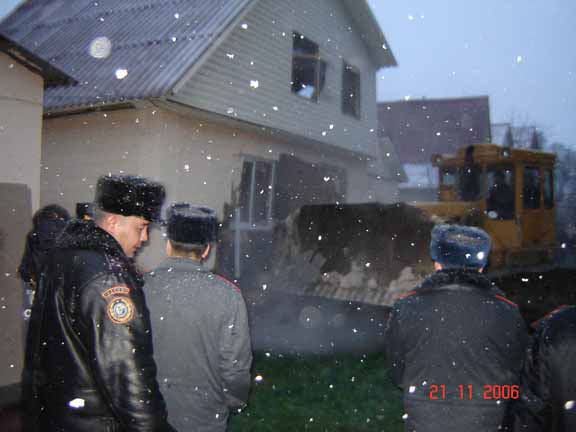‘Displacement’ on the Silk Road
By Alexander Winnig | Jan 13, 2012

Moscow’s Museum of Modern Art is currently hosting “Displacement,” an exhibit by New York-based Italian photographer Giada Ripa that offers a glimpse of the diversity across the former Soviet Union and a narrative on travel and identity.
Two photo series, “Beyond the Oil Route” and “Falling Icons,” make up the exhibit, the first an attempt to shed light on the lives of different ethnic and religious groups living in oil-rich countries along the former Silk Road, and the second the artist’s exploration of her own identity in different landscapes.
“This is the first time these two works have been shown together; they appear to have very different visual language, but come from a similar source,” Ripa told The Moscow Times in an interview.
This diverse show is the latest in a series of events associated with the Russian-Italian year of culture. But, in contrast to the Caravaggio exhibition currently on display at the Pushkin Museum of Fine Arts, it is something of a hidden gem. Its debut in Moscow has been accompanied by little fanfare, and its staging at MMoMA brings out the intimate feel of its subject matter.
“Beyond the Oil Route” is distinguished by its sensitive character portraits and the signs of fast-paced change that it points to in Central Asia and the Caucasus.
Shot over the last seven years, it captures people in everyday poses — whether at the market, on the steppe or at home — and has a special focus on displaced minority groups living along the former Silk Road, now sometimes known as the Oil Route.
A particularly poignant moment is captured in 2007 in Seleskia, Kazakhstan, where a Hare Krishna sits amid rubble. Kazakh authorities had ruled that the land on which the local Hare Krishna community center was built was not legally registered and demolished it.
To see the exhibited photo and to read more: http://www.themoscowtimes.com/arts_n_ideas/article/displacement-on-the-silk-road/450882.html#ixzz1jJGk9w26
To watch video of the demolition:















